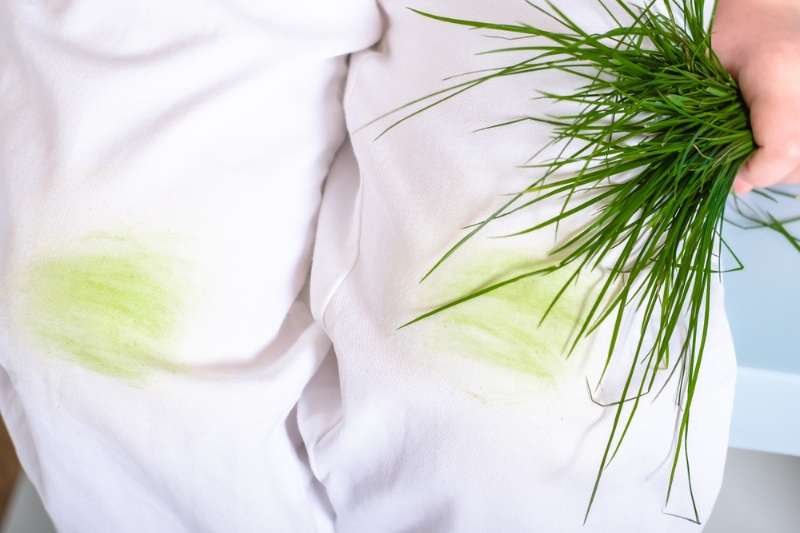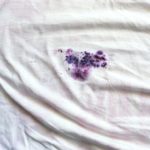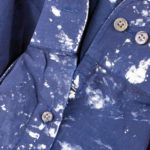Grass contains several pigmented compounds, with the main one being chlorophyll, which helps the plant absorb energy in order to survive.
These natural compounds have a tendency to absorb into natural fibres of your clothes, causing stains. This can easily happen when your having a picnic, gardening or playing sports such as cricket.
Below you’ll find simple steps to remove those grass stains.
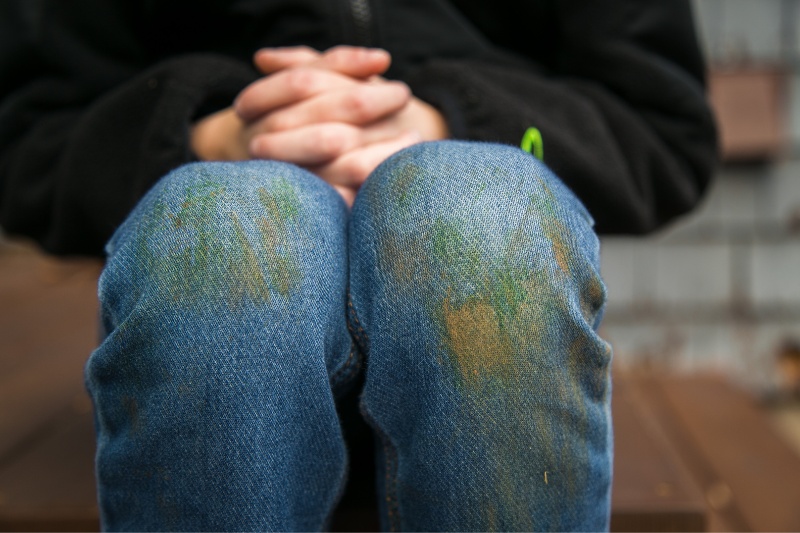
How to Remove Grass Stains from Clothes
Step 1: Remove loose dirt
Before anything else, make sure to brush away any solid matter; this will only make the stain worse when you begin scrubbing.
This includes removing loose dirt and small lumps of grass or dried mud. An old toothbrush or nail brush will do the trick.
Step 2: Rinse clothes in cool water
The pigmented compounds in grass are protein based, so washing in cool water will help prevent them permanently staining.
Step 3: Choose a stain remover
We recommend the distilled white vinegar method for the best results, but using hydrogen peroxide will be just as effective. Below you will find the steps for each of the methods.
White vinegar
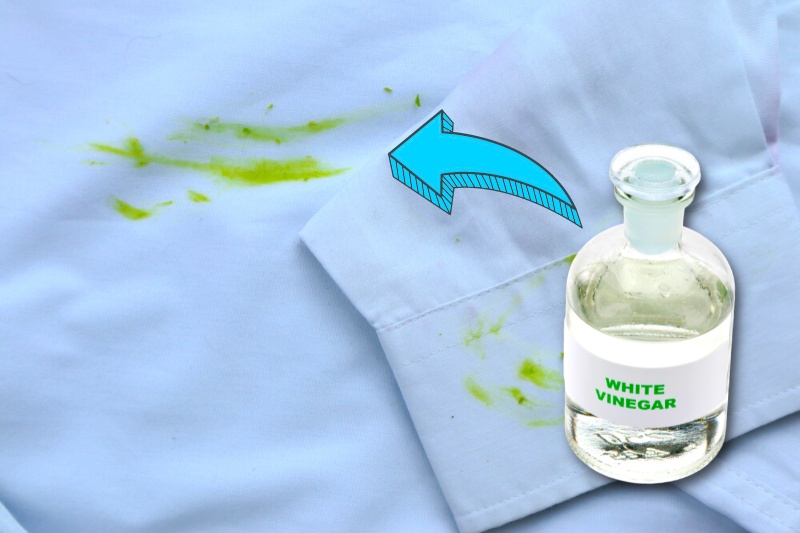
It’s likely that you already have white vinegar in your kitchen, making this a preferred option for most. It also seems to have the best results; easily returning your favourite clothes back to their prime.
Here’s what to do:
- Add one part distilled white vinegar to one part water.
- Soak the stained area and leave it for roughly 30 minutes.
- Scrub and then rinse in cool water.
- Work in your usual detergent, let it sit and then rinse again with cool water.
Hydrogen peroxide and bicarbonate of soda (baking soda)
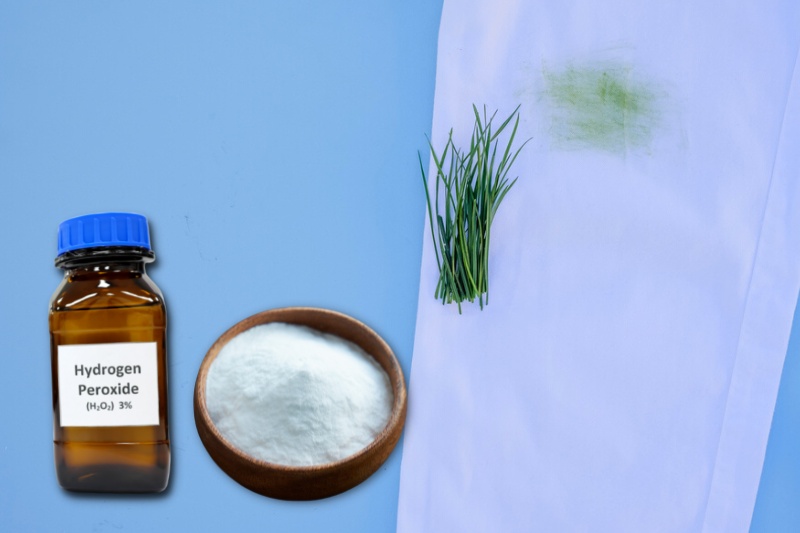
This approach works wonders but beware of the mess from the paste!
- Add one or two drops of hydrogen peroxide to a tablespoon of bicarbonate of soda (baking soda) to create a thick paste.
- Gently rub it over the grass stain, allowing it to sit for about 30 minutes.
- Grab an old toothbrush and work the paste in.
- Rinse with cool water.
- Work in your usual detergent with the toothbrush, let it sit for 10-15 minutes and then wash with cool water again.
If you want to try something a bit less messy, replace the bicarbonate of soda with regular dish soap.
Step 4: Wash in cold water
For the best results, use a cold wash on a regular machine cycle. Remember to check the tags for any special instructions.
If you have an enzymatic stain remover, this can help break down the stain and give you even better results.
Step 5: Check the stain before you dry it
After your item has been washed, it’s important that you check if the stain has come out completely. If it’s still there, don’t put it in the dryer; the high heat will set the stain. Repeat the wash if necessary.
If the stain hasn’t been noticeably reduced, try following our steps for removing set-in stains below.
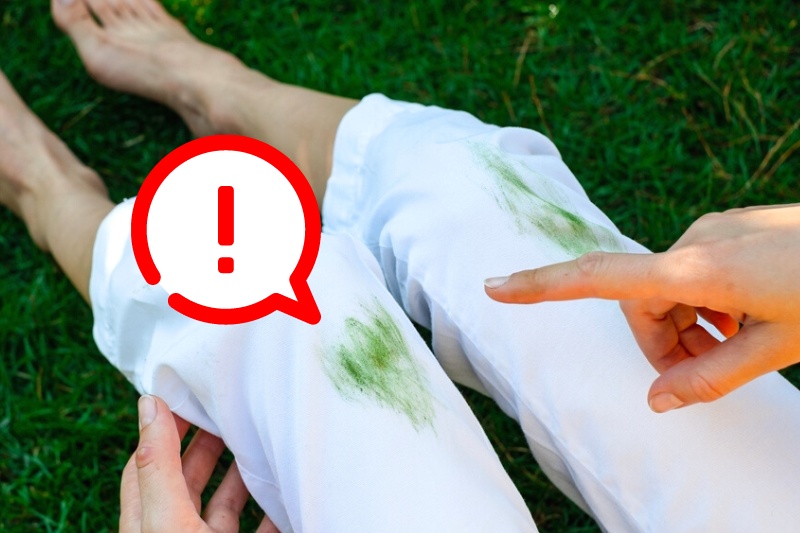
How to Remove Set-In Stains
Deeply set-in grass stains will, of course, be harder to remove. They require a bit more elbow grease, washing and, most importantly, patience.
Step 1: Remove loose dirt
Make sure to brush away any solid matter; this will only make the stain worse when you begin scrubbing. This includes loose dirt, small lumps of grass or dried mud. An old toothbrush or nail brush will do the trick.
Step 2: Use a laundry soap bar
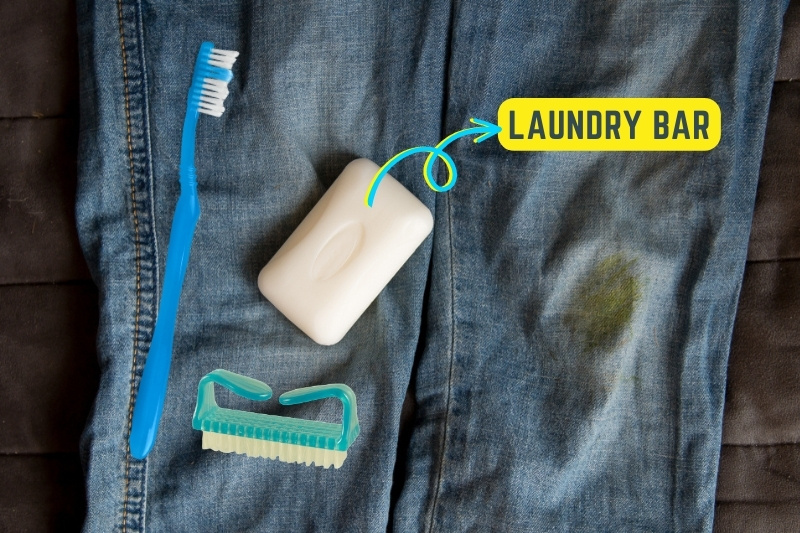
Wet the laundry soap bar, and start rubbing it onto the stain. Try using a toothbrush or nail brush to really work in the soap.
Step 3: Launder as usual
Run your item in your usual machine cycle. Remember to check the stain before putting it in the dryer, as the heat will make the stain set. If your item is not machine washable, just rinse it thoroughly and let it air dry.

In The Wash is your guide to the best laundry and cleaning products, tips and tricks. Our mission is to solve the UK’s cleaning and laundry dilemmas!
